International Holocaust Remembrance Day: observations from Germany
Primo Levi, Italian-Jewish author, chemist, and Auschwitz survivor, delivered a set of essays about life and survival in Nazi extermination camps in his 1986 book “The Drowned and the Saved”. Levi wrote:
… For us to speak with the young becomes even more difficult. We see it as a duty and, at the same time, as a risk: the risk of appearing anachronistic, of not being listened to. We must be listened to: above and beyond our personal experiences, we have collectively witnessed a fundamental, unexpected event, fundamental precisely because unexpected, not foreseen by anyone. It took place in the teeth of all forecasts; it happened in Europe; incredibly, it happened that an entire civilized people, just issued from the fervid cultural flowering of Weimar, followed a buffoon whose figure today inspires laughter, and yet Adolf Hitler was obeyed and his praises were sung right up to the catastrophe. It happened, therefore it can happen again: this is the core of what we have to say.
On 27 January 1945, Soviet Red Army troops liberated the Nazi concentration and extermination camp at Auschwitz-Birkenau in south-central Poland. Over 1 million men, women, and children were murdered.
The United Nations declared January 27 as International Holocaust Remembrance Day; the designation came during the 42nd plenary session of the United Stations when resolution 60/7 was passed on 1 November 2005.
Accepting and openly stating responsibility are critical first steps, but spending time, money, and effort to ensure the simple motto of “never again” is also an ongoing reality that isn’t solely up to the citizens of Germany. It’s a collective responsibility that we all should have to remain vigilant; that we all have to recognize and bolster actions which encourage and strengthen the universality of human rights, and reject the erosion and withdrawal of those rights.
I believe responsible tourism also includes paying appropriate respect at a memorial, especially the Holocaust Memorial in Berlin. It’s my view this important memorial is not (supposed to be) a playground.
And yet, there’s something to be said about what it means to have freedom in the early 21st-century, allowing people to laugh and frolic in the public space, an undulating sculpture of featureless massive grey cement blocks, a testimonial to the systematic murder of millions of people.
Naturally, you have the freedom to play here, take selfies, and have a grand time. But it doesn’t mean I’m gonna laugh with you; for example: Yolocaust art project (DW 2017).
Below is a small set of observations from Germany, in Berlin and elsewhere:
Berlin, Old Jewish Cemetery
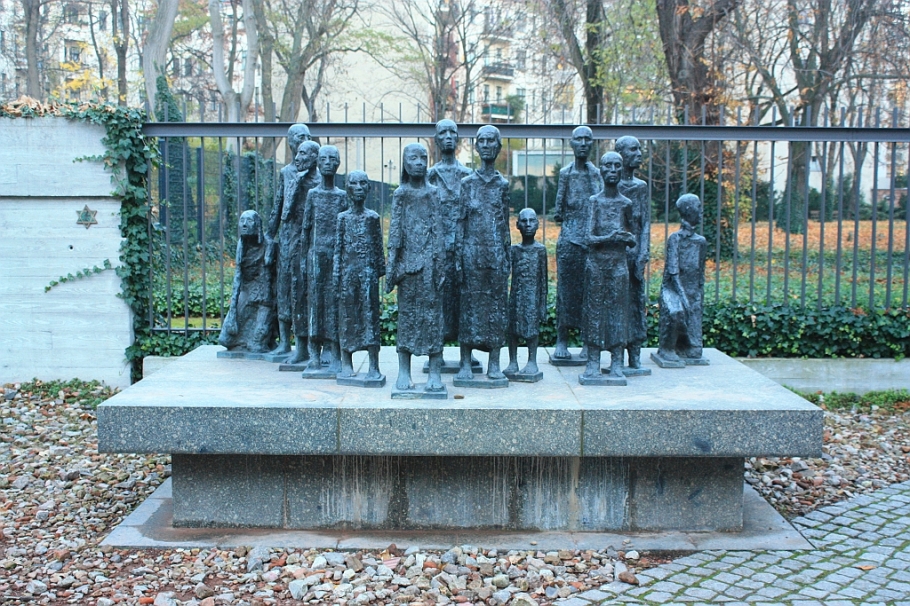
Will Lammert’s sculpture “Jüdische Opfer des Faschismus” (Jewish victims of fascism) in front of Berlin’s Old Jewish Cemetery, which was in use from 1672 to 1827 before the area became the first nursing home to the Jewish community in 1844. Photo: 21 Nov 2012.
Berlin, Grunewald station

Memorial on track 17 from which no trains will ever leave again. More than 50-thousand Jews from Berlin were deported from this Grunewald station alone. Photo: 7 Dec 2015.
Berlin, Holocaust memorial
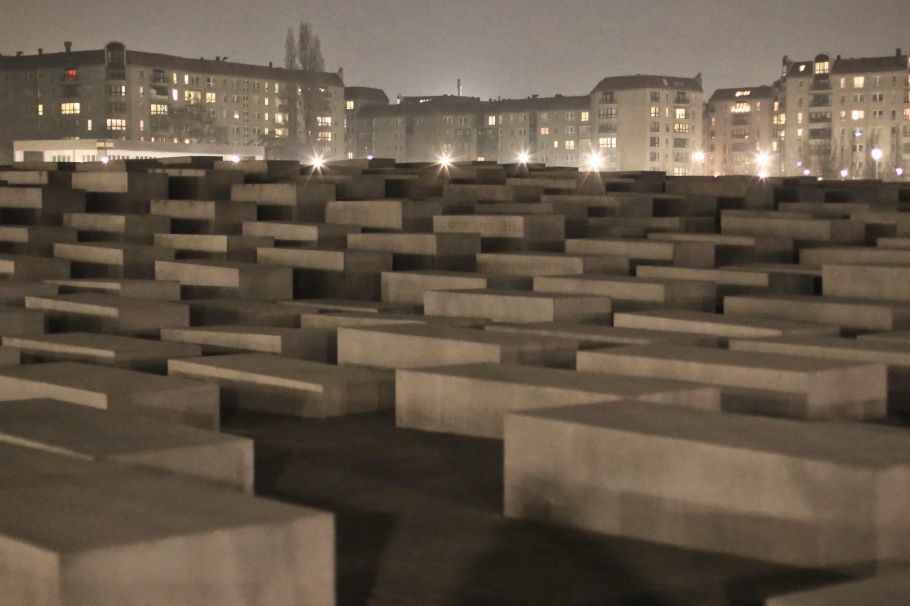
Massive stone blocks lay quiet and devoid of people at night: Berlin Holocaust Memorial. Photo: 4 Dec 2014.
Berlin, Jewish Museum
“Shalechet” (Fallen Leaves), at Berlin’s Jewish Museum.
Berlin, Memorial to murdered Sinti and Roma
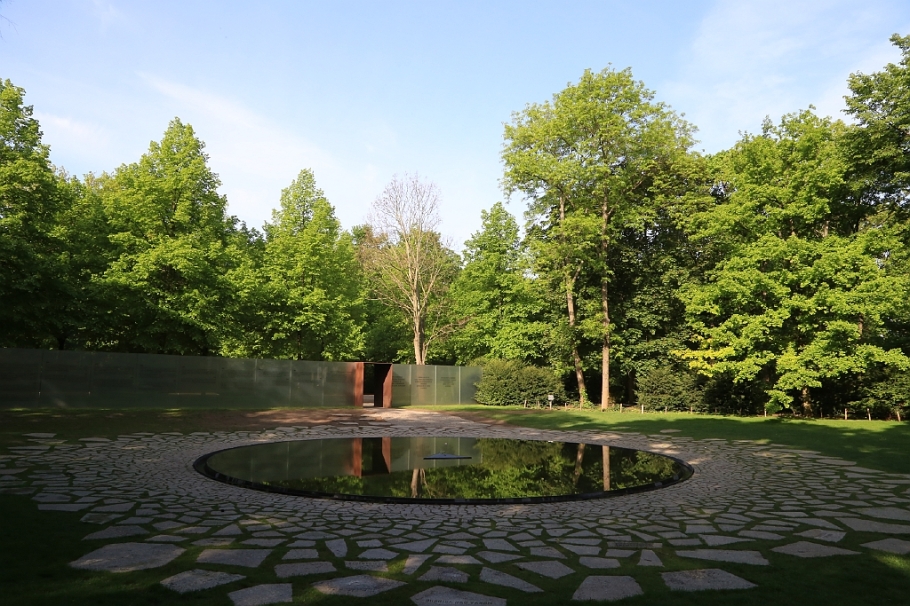
Reflecting pool at the Berlin Memorial to Murdered Sinti and Roma in Europe. Photo: 8 May 2015.
Berlin Stolpersteine

Stolpersteine (“stumbling stones”) by candlelight on Pogromnacht anniversary. This and the next photo in Berlin Friedrichshain, 9 Nov 2016.
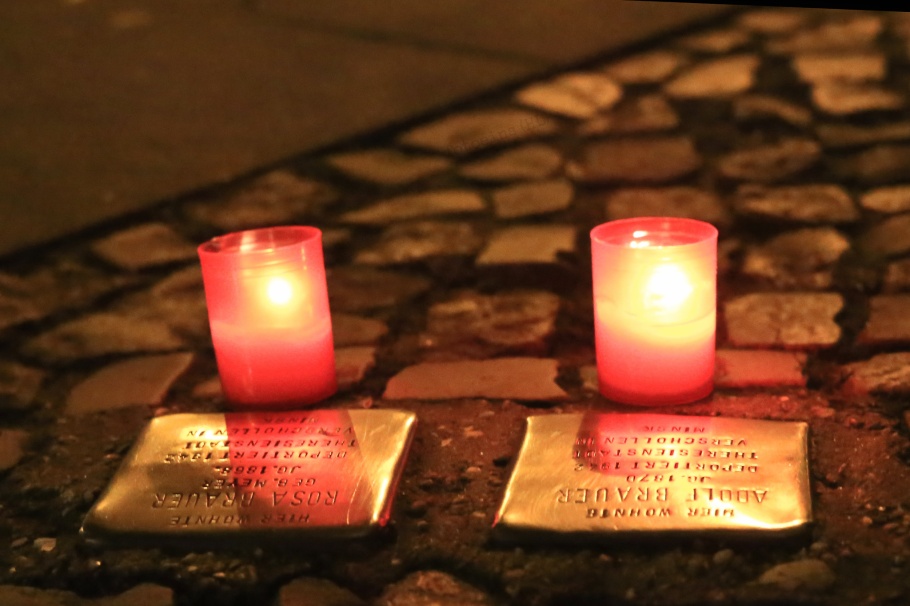
Stolpersteine for Adolf Brauer and Rosa Brauer (née Meyer): both were deported in 1942 to Thereisenstadt (Terezín) and subsequently to Treblinka where they were murdered.
Dachau Concentration Camp
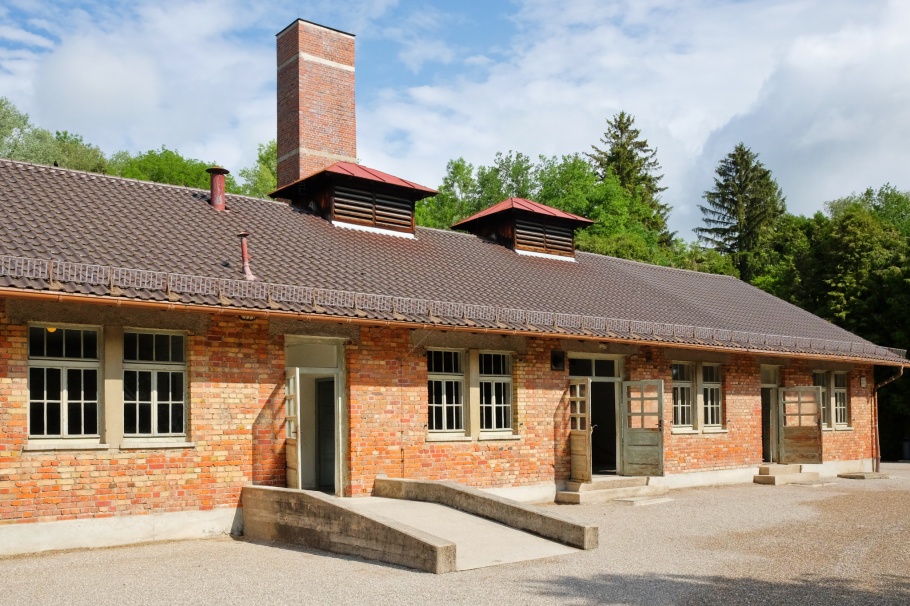
Crematorium no. 2, built in 1942-1943: Dachau Concentration Camp Memorial Site. Photo: 1 Jun 2018.
Frankfurt am Main, Neuer Börneplatz Memorial Site
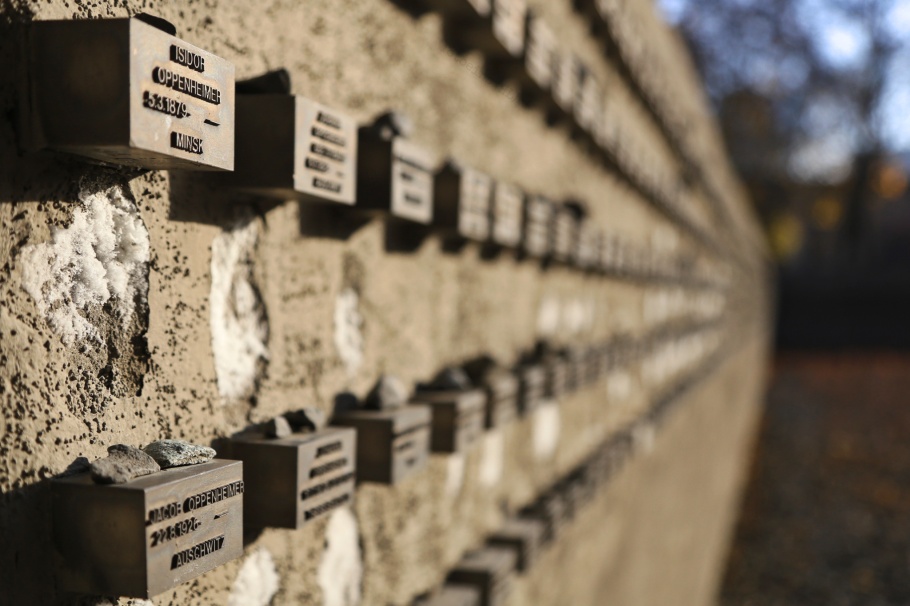
Over 11900 names of Jews and the places where they died or disappeared: Neuer Börneplatz Memorial. Photo: 21 Nov 2014.
Heidelberg, Old Synagogue Square
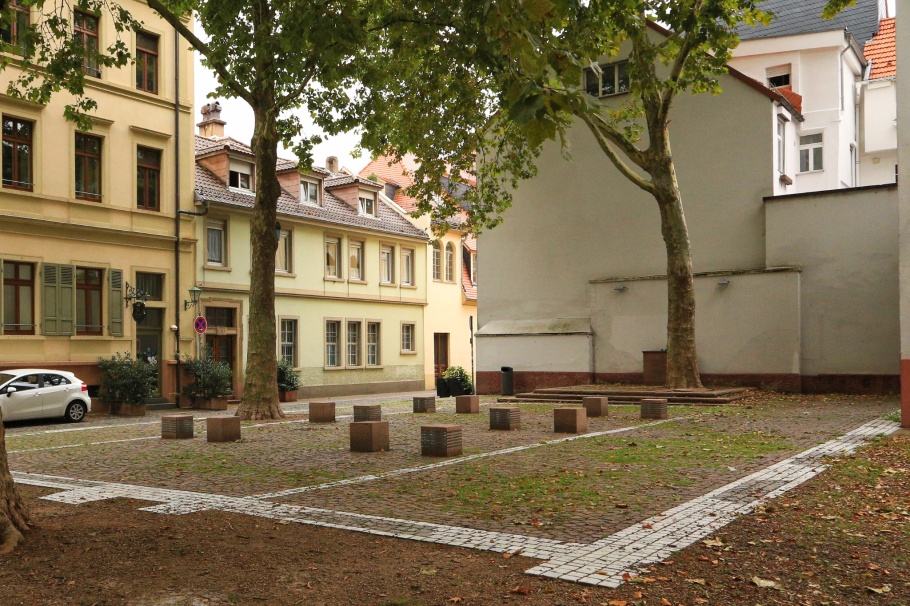
Heidelberg’s Old Synagogue Square: the synagogue was destroyed on Pogromnacht in 1938. Photo: 19 Sep 2017.
Leipzig, Main Train Station
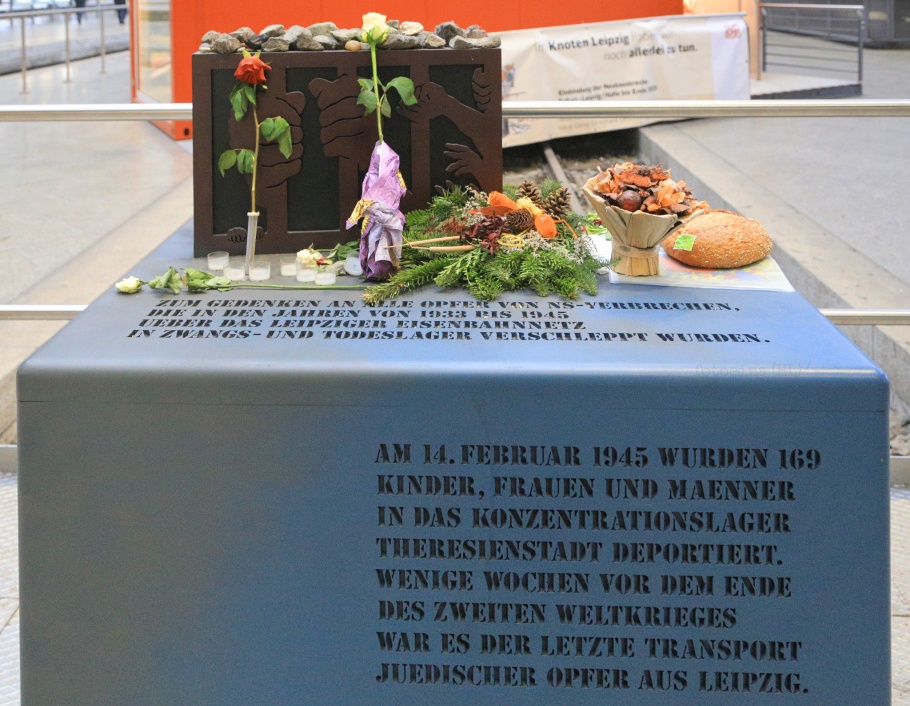
The final death train 427/XVI/1. “In remembrance of all victims of Nazi crimes who were sent to concentration- and death-camps on trains from Leipzig between 1933 and 1945. On 14 February 1945, 169 men, women, and children were deported to Theriesienstadt concentration camp. This was the last transport of Jewish victims from Leipzig a few weeks before the end of the Second World War.” Photo: 3 Dec 2014.
Munich, NS Documentation Centre
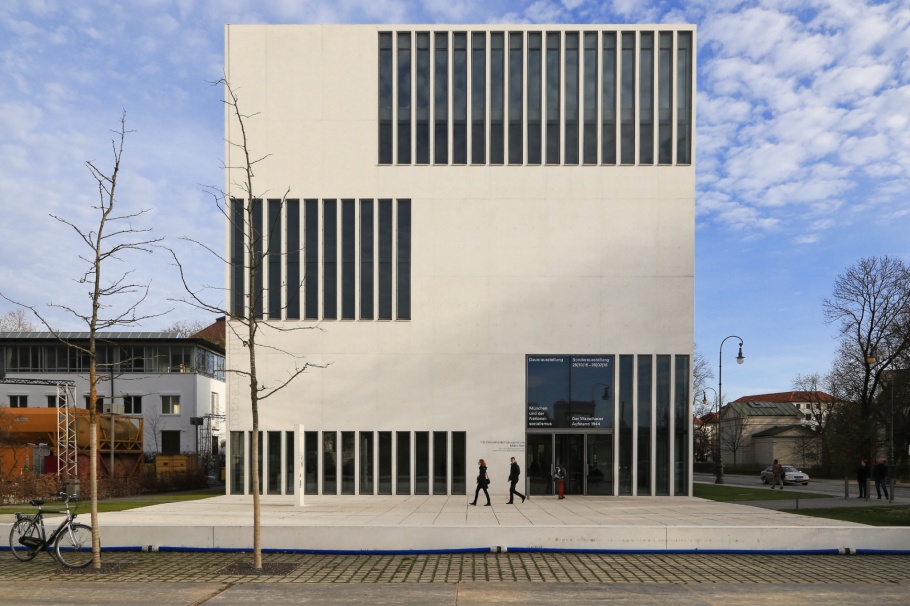
NS-Dokumentationszentrum (Documentation Centre for the History of National Socialism), at the former location of Braunes Haus which was the Munich headquarters of the Nazi party from 1931 to 1945. Photo: 15 Nov 2015.
More
• United Nations Outreach Programme
• Yad Vashem
• US Holocaust Memorial Museum
• Primo Levi: The Guardian (2002), The New Yorker (2015).
I made all photos above on visits to Germany in 2012, 2014, 2015, 2016, 2017, and 2018. This post appears on Fotoeins Fotografie at fotoeins.com as https://wp.me/p1BIdT-bgi.
Available for viewing at the Auschwitz memorial site is a printed list of names of all known victims of the Holocaust:
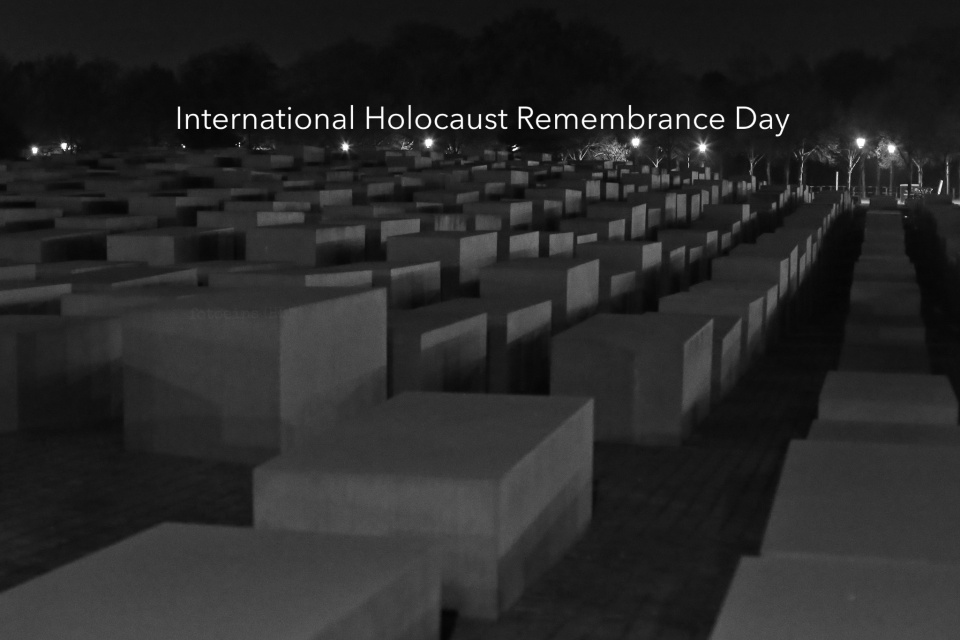
6 Responses to “International Holocaust Remembrance Day: observations from Germany”
Thank you for this post. I have visited Heidelberg, and Yad Vashem in Israel.
LikeLiked by 1 person
Thanks for reading and for your comment, Reverend. I’ve not yet visited Yad Vashem or Israel, but I would very much like to go.
LikeLike
[…] of Nothingness Filling in Day 98 Abrachan PudusseryVariations Word WackerJapanese Maple Fotoeins FotografieInternational Holocaust Remembrance Day: observations from Germany MV ObsessionWeekly Photo Challenge: Variations on a Theme… Weekly Photo Challenge: Variations on […]
LikeLiked by 1 person
This is a truly wonderful post, I’d not seen many of these memorials. I agree it is a worldwide responsibility to remember and commemorate the horror to insure “never again” – especially as survivors are fewer every year now. We are headed to Yad Vashem in October as part of our first visit to Israel. I have visited the memorial in Washington DC which is very moving. Cannot imagine how difficult YV will be. Thank you for this.
LikeLiked by 1 person
Hello, Tina. Thank you for stopping by and for your very kind comment. As you’ve mentioned, that there are fewer survivors every year is mentioned more frequently with every passing year. I hope you have a good trip to Yad Vashem, a place I would very much like to visit.
LikeLike
[…] Fotoeins Fotografie International Holocaust Remembrance Day: observations from Germany […]
LikeLiked by 1 person